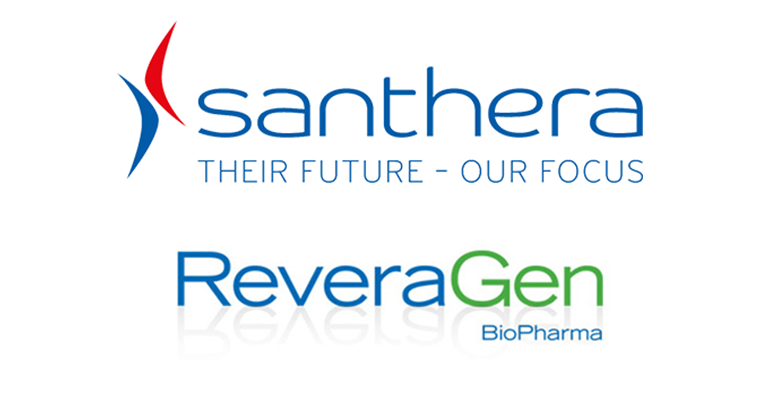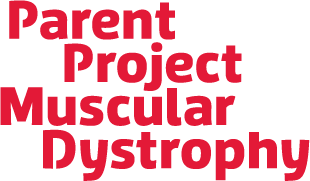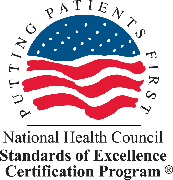
Today Santhera and ReveraGen shared 2.5-year treatment data with vamorolone in Duchenne.
In the announcement below the companies reported on data from 46 patients who have participated in two open-label extension studies covering 2.5 years, all patients eventually received doses of 2mg/kg or 6mg/kg. The patients on treatment at 2.5 years maintained the treatment effect reported at 6 months from baseline (improvement of their time to stand velocity of approximately 0.05 rises/second) when compared to the historical CINRG natural history study steroid-naive patients (collected from 2006-2016). This is equivalent to about a two-year delay in decline of time to stand velocity, which is consistent with treatment effect of glucocorticoids reported in other studies.
The safety and tolerability of vamorolone at 2.5 years was reported to be consistent with what was shown in the 18-month study. Patients on 6mg/kg that experienced weight gain were managed by reducing the dose of vamorolone. Other typical adverse events seen in patients with corticosteroids were observed in a few individuals.
PPMD looks forward to additional analysis comparing the data against natural history datasets, as well as the future results of their ongoing randomized placebo and active-controlled study of patients on placebo, vamorolone, or prednisone. We hope to hear more updates from Santhera and ReveraGen at PPMD’s Virtual Annual Conference later this June.
Read the press release from Santhera & ReveraGen
Santhera and ReveraGen Announce New 2.5-year Treatment Data with Vamorolone in Duchenne Muscular Dystrophy
Pratteln, Switzerland, April 28, 2021 – Santhera Pharmaceuticals (SIX: SANN) and ReveraGen Biopharma announce new clinical data of 2.5-year treatment outcome with vamorolone in patients with Duchenne muscular dystrophy (DMD). These Phase 2a long-term treatment data demonstrate a maintenance of treatment effect, equivalent to a delay of about two years in decline for time to stand (TTSTAND) velocity, and confirm safety and tolerability benefits of vamorolone over the 2.5-year follow up period. Long-term treatment with vamorolone resulted in significantly fewer corticosteroid-associated adverse events than reported in other clinical trials with other steroids.A sequence of studies investigated the safety, tolerability and long-term treatment benefit with vamorolone and provide open-label data in a total of 46 patients with DMD, aged 4 to up to 10 years (start/end of treatment), of which 41 (89%) completed a 2.5 years treatment period. 48 participants initially completed a two-week multiple ascending dose trial VBP15-002 [1], 46 of whom entered the open-label 6-month extension VBP15-003 [2], covering a dose range of vamorolone of 0.25 to 6.0 mg/kg/day. All of the 46 patients completing the latter study entered the 24-month long-term extension study VBP15-LTE [3] where all patients eventually received doses of vamorolone of 2.0 to 6.0 mg/kg/day. The total exposure to vamorolone treatment in these studies was 113 patient years. The most commonly administered dose of vamorolone was 6.0 mg/kg/day. The studies, conducted by the Cooperative International Neuromuscular Research Group (CINRG), evaluated drug-related effects of vamorolone on timed motor function outcomes and corticosteroid-associated safety concerns.
Maintenance of treatment effect indicates disease modifying potential of long-term treatment with vamorolone
Previously reported findings [2] showed that patients treated with the two highest dose levels of vamorolone (2.0 mg/kg/day or 6.0 mg/kg/day) improved on average in their time to stand (TTSTAND) velocity by approximately 0.05 rises/second after 6 months of treatment from baseline, while patients treated with lower vamorolone doses or steroid-naïve controls from the CINRG-DMD Natural History Study (DNHS) showed no change. In practice, this change of 0.05 rises/second in a velocity is equal to e.g. an improvement from 5 to 4 seconds or from 8 to 5.7 seconds in the rise time from supine to standing. The treatment effect of the two highest dose levels of vamorolone was maintained at 0.05 rises/second at 2.5 years when compared to age-matched steroid-naive patients from the CINRG-DNHS. These results are equivalent to a delay of about two years in decline in TTSTAND velocity, which is consistent with the treatment effect of glucocorticoids seen in other studies [4, 5], and suggest disease modifying potential of vamorolone treatment in DMD. A similar change in trajectory was also observed for time to run/walk 10 meters (TTRW) compared to steroid-naïve patients from CINRG-DNHS. Assessments of 6-minute walk test (6-MWT) was not conducted in an adequate number of participants in CINRG-DNHS to allow for a comparison, however, patients receiving long term treatment with vamorolone remained above their average baseline value for 6-MWT after 2.5 years which further supports the long-term efficacy of vamorolone.
Favorable tolerability profile of vamorolone with less corticosteroid-typical side effects confirmed
The safety and tolerability of vamorolone at 2.5 years was consistent with previously published 18-month data [3]. Both doses of 2.0 and 6.0 mg/kg/day were safe and well tolerated during 2.5 years of treatment in DMD patients. Four out of the five patients who discontinued the study did so for logistical reasons or switching to other trials and only one patient discontinued from the study due to a disease-related adverse event (muscle weakness). A longer treatment duration was not associated with an increase in the incidence of treatment emergent adverse events. Patients experiencing adverse weight gain on the 6.0 mg/kg/day dose level (19% annual incidence rate), the most frequent steroid-associated adverse event, were clinically managed by reducing the dose of vamorolone to 4.0 or 2.0 mg/kg/day. This resulted in a reduction of the annual incidence rate to 6%. Other typical adverse events seen frequently in patients treated with corticosteroids such as Cushingoid appearance, behavioral abnormalities, skin changes (such as acne) or abnormal hair growth (hirsutism) were observed in only a few individual patients or not at all. Incidence rates of these individual events did not exceed 5% per year of treatment with vamorolone in the LTE. Importantly there were no reports of stunted growth, commonly reported in connection with corticosteroid treatment, over the entire follow up period.
“We are very pleased with the results of this long-term follow-up which show that treatment benefits of vamorolone are sustained over the 2.5-year follow-up period. Importantly, vamorolone was well tolerated and we observed far fewer of the side effects typically seen with corticosteroids in the clinic,” said Eric Hoffman, PhD, President and CEO at ReveraGen BioPharma. “We would like to thank all patients, their caregivers and health care professionals for their much-valued participation in these studies which, we are confident, will support our approach to develop vamorolone as a novel treatment for this devastating disease.”
“These findings indicate the long-term maintenance of treatment effect and disease modifying potential with vamorolone. We are equally excited about the findings that vamorolone did not show stunting of growth typically reported for other corticosteroids, and also resulted in significantly fewer physician-reported adverse events which are common reasons for corticosteroid treatment discontinuation,” said Dario Eklund, CEO of Santhera. “We are expecting the 6-month results from the pivotal Phase 2b VISION-DMD study in Q2-2021 and are confident that they will provide further evidence to establish vamorolone as an effective treatment and valuable alternative to corticosteroids for the long-term treatment for DMD.”
Additional data analyses including comparisons to external control datasets are planned and will be submitted to forthcoming congresses and for journal publication.
About Vamorolone
Vamorolone is a first-in-class drug candidate that binds to the same receptor as corticosteroids but modifies its downstream activity and as such is a dissociative partial agonist [6-8]. This mechanism has the potential to ‘dissociate’ efficacy from typical steroid safety concerns and therefore vamorolone could emerge as a promising alternative to existing corticosteroids, the current standard of care in children and adolescent patients with DMD. There is substantial unmet medical need in this patient group as high-dose corticosteroids have significant systemic side effects that diminish patient quality of life. In the pivotal Phase 2b VISION-DMD trial, the last patient has completed the last visit of the 24-week, placebo- and active-controlled treatment period and topline 6-month data are expected in Q2-2021, paving the way for a US NDA submission in Q1-2022. Vamorolone has been granted Orphan Drug status in the US and in Europe, and has received Fast Track and Rare Pediatric Disease designations by the US FDA and Promising Innovative Medicine (PIM) status from the UK MHRA.
Vamorolone was discovered by US-based ReveraGen BioPharma, Inc. and is being developed in collaboration with Santhera, which owns worldwide rights to the drug candidate in all indications. The vamorolone development program has received funding from several international non-profit foundations and patient organizations, the US National Institutes of Health, the US Department of Defense and the European Commission’s Horizon 2020 program.
References:
[1] Conklin et al. (2018). Pharmacol Res. 136:140-150.
[2] Hoffman EP et al. (2019). Neurology 93: e1312-e1323.
[3] Smith E, et al. (2020). PLOS Medicine, Link
[4] McDonald CM et al. Lancet. 2018 Feb 3;391(10119):451-461.
[5] Matthews E et al. Cochrane Database Syst Rev. 2016; 5.
[6] Heier CR at al. (2013). EMBO Mol Med 5: 1569–1585.
[7] Reeves EKM, et al (2013). Bioorg Med Chem 21(8):2241-2249.
[8] Liu X, et al. (2020). Proc Natl Acad Sci USA 117:24285-24293.



 by: Parent Project Muscular Dystrophy
by: Parent Project Muscular Dystrophy

